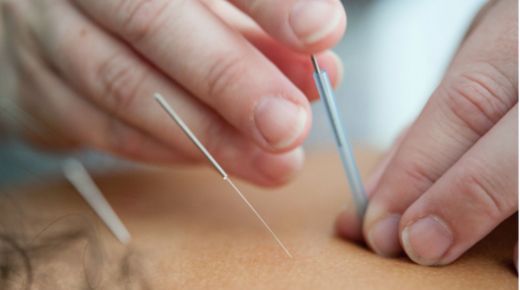When most people think of cosmetic dentistry, they often imagine bright, flawless smiles. But there’s more to it than just aesthetics. Cosmetic dentistry plays a crucial role in maintaining overall oral health and preventing a range of oral diseases.
I’ve seen firsthand how treatments like veneers, bonding, and teeth whitening can do more than just enhance appearances. These procedures can correct misalignments, fill gaps, and remove plaque, all of which contribute to better oral hygiene and disease prevention. By addressing these issues early, cosmetic dentistry can save you from more serious dental problems down the line. Additionally, combining good dental care with a regular workout program can enhance your overall health and well-being.
Understanding Cosmetic Dentistry
Cosmetic dentistry plays a significant role in oral health. It enhances smiles and helps prevent dental problems.
Definition and Scope
Cosmetic dentistry refers to procedures that improve the appearance of teeth, gums, and bites. It’s not just about aesthetics; it involves maintaining the function and health of the oral cavity. Treatments in this field address issues like alignment, color, shape, and size of teeth, contributing to overall dental well-being.
Common Procedures
Cosmetic dentists offer various treatments to enhance dental aesthetics. These include:
- Teeth Whitening: Brightens stained or discolored teeth through bleaching agents.
- Veneers: Thin porcelain or resin shells cover the front surface of teeth to correct chips, cracks, or stains.
- Bonding: Tooth-colored resin repairs decayed, chipped, or broken teeth.
- Crowns: Caps placed over damaged teeth, restoring their shape, strength, and appearance.
- Invisalign: Clear, removable aligners straighten teeth without braces.
- Implants: Artificial tooth roots provide a base for permanent or removable replacement teeth.
Cosmetic dental procedures address aesthetic concerns and help maintain oral health, preventing more serious issues.
The Link Between Cosmetic Dentistry and Oral Health
Cosmetic dentistry plays a vital role in enhancing oral health. It’s not just about aesthetics; these procedures contribute significantly to preventing dental issues.
Preventive Aspects of Cosmetic Dentistry
Cosmetic dentistry offers preventive benefits. Data align with enhanced oral hygiene practices, impacting both aesthetics and health positively (e.g., teeth whitening, veneers). Whiter teeth encourage better brushing, reducing plaque build-up and preventing cavities. Studies show that aligned teeth, achievable with Invisalign, reduce periodontal disease risk by minimizing the spaces where plaque can accumulate. Procedures like bonding and crowns protect teeth from further decay or damage, reducing the chance of oral diseases.
Role in Early Detection of Oral Issues
Regular cosmetic dental visits help detect oral issues early. Dentists often identify problems like cavities, gum disease, and oral cancer during these visits. Veneers, bonding, and Invisalign treatments require comprehensive oral exams. Consequently, early-stage problems get addressed before becoming severe. Data from the American Dental Association show that early detection improves treatment outcomes. This proactive approach ensures issues don’t escalate and keeps overall oral health in check.
Benefits of Cosmetic Dentistry for Oral Disease Prevention
Cosmetic dentistry offers numerous benefits beyond aesthetic improvements, directly contributing to oral disease prevention.
Improved Oral Hygiene
Cosmetic dentistry promotes better oral hygiene. Procedures like veneers, crowns, and bonding not only enhance appearance but also correct structural issues. Straighter teeth, achieved via Invisalign, are easier to clean and less likely to trap food. Consequently, risks of plaque buildup, decay, and gum disease decrease.
Enhanced Self-Motivation for Dental Care
Patients often feel more motivated to maintain their dental health after cosmetic procedures. A brighter smile can encourage better hygiene routines, such as regular brushing and flossing. This improved self-motivation can significantly reduce the likelihood of oral diseases, as consistent care helps prevent plaque accumulation and gum infections.
Long-Term Oral Health Impacts
Cosmetic dentistry’s preventive benefits extend to long-term oral health. By addressing misaligned teeth and bite issues early, these treatments help avoid complications like TMJ disorders and excessive wear. Regular cosmetic dental check-ups aid early detection of issues like cavities and periodontal disease, ensuring timely intervention and better outcomes.
Challenges and Considerations
Cosmetic dentistry offers numerous benefits, but it’s essential to understand the challenges and considerations to make informed decisions.
Potential Risks and Complications
All dental procedures carry some risk. With cosmetic dentistry, possible complications include infection or sensitivity. Some treatments, like veneers or crowns, may lead to altered tooth structure. In rare cases, allergic reactions to materials used in cosmetic procedures might occur. Failures in execution can result in improper fitting or alignment issues. It’s critical to choose a qualified and experienced cosmetic dentist to minimize these risks.
Cost and Accessibility
Cosmetic dental procedures can be costly. Treatments like veneers, implants, and Invisalign often come with high price tags. Insurance coverage is limited for aesthetic procedures, adding financial strain. Accessibility is another concern, particularly in rural areas where fewer cosmetic dentistry specialists practice. Financial constraints and geographical limitations can prevent individuals from seeking necessary cosmetic dental treatments. Exploring financing options or finding a local provider can help mitigate these challenges.




